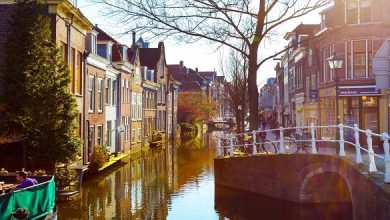
It’s hard to believe that the Marais (which means marsh) started life as a soggy bog. In 1139 the Knights Templar built a fortified free town – a haven for tax dodgers – on the drained land here, but nothing of that remains nowadays. Instead, elegance and wealth loom large. When, in the 14th century, trendsetter Charles VII moved his court into the Hôtel des Tournelles, which sat on what is now Place des Vosges, a host of titled disciples and their magnificent mansions followed. Henri IV is responsible for the gloriously symmetrical Place des Vosges, the city’s first planned square.
Just off Place des Vosges is the perfectly restored 17th-century Hôtel de Sully, home to France’s photographic archives and a dainty French garden. The ardent 17th-century letter-writer Madame de Sévigné lived in the nearby Hôtel Carnavalet, so it’s fitting that this Renaissance gem has been reborn as a museum devoted to the history of Paris.
]The Hôtel de Soubise, with its superlative Rococo interiors and paintings by Boucher and Van Loo, houses the national archives, including letters from Joan of Arc, while Hôtel Guénégaud, a superb mansion built by French architect François Mansart in around 1650, displays stuffed animals and weapons in its Museum of Hunting and Nature.
Street Markets
The city’s richly colored street markets offer an unrivaled taste of France. Melons picked in Provence, geese fattened in the Périgord, ruby-red cherries, milky cheeses, flour-dappled breads, and earthy wild mushrooms are hauled to the city, snapped up, and polished off while still at their peak. Roving marchés volants (street markets) set up twice a week at cockcrow and disappear by lunchtime, leaving in their wake happy customers and satisfied pigeons.
The Saxe-Breteuil market, in the shadow of the Eiffel Tower, attracts a discerning crowd who think nothing of lining up for 25 minutes to secure the most emerald lettuces and the creamiest cheese for Sunday lunch. Move onto the 16th arrondissement, where you’ll find the President Wilson market; the casually slung Hermès scarves and bags worn by the glamorous shoppers here for a food run are bona fide. Under the gaze of a rampaging statue of George Washington, locals buy sweet carrots and Cabernet-colored beetroots from the delightful Monsieur Thiébault, whose family has been selling vegetables since 1873.
Practical Information
- Marché Président-Wilson Ave du Président-Wilson, Chaillot; Métro: Iéna; opening times: Wednesday and Saturday morning
- Marché Saxe-Breteuil Ave de Saxe, Invalides & Eiffel Tower; Métro: Ségur; opening times: Thursday and Saturday morning Parc George Brassens Rue de Morillons, Montparnasse; Métro: Convention; opening times: 9am-6pm Saturday and Sunday
- Port de Vanves Ave Georges-Lafenestre & Ave Marc-Sangnier; Métro: Porte de Vanves; opening times: 8am–7pm Saturday and Sunday
Last word
Pavement style Port de Vanes on weekends for 1950s jewellery and vintage glassware. Francophile bookworms should browse the weekend book market held under the metal rafters of a former horse slaughterhouse, now transformed into the pretty Parc Georges Brassens, for rare and second-hand tomes.





